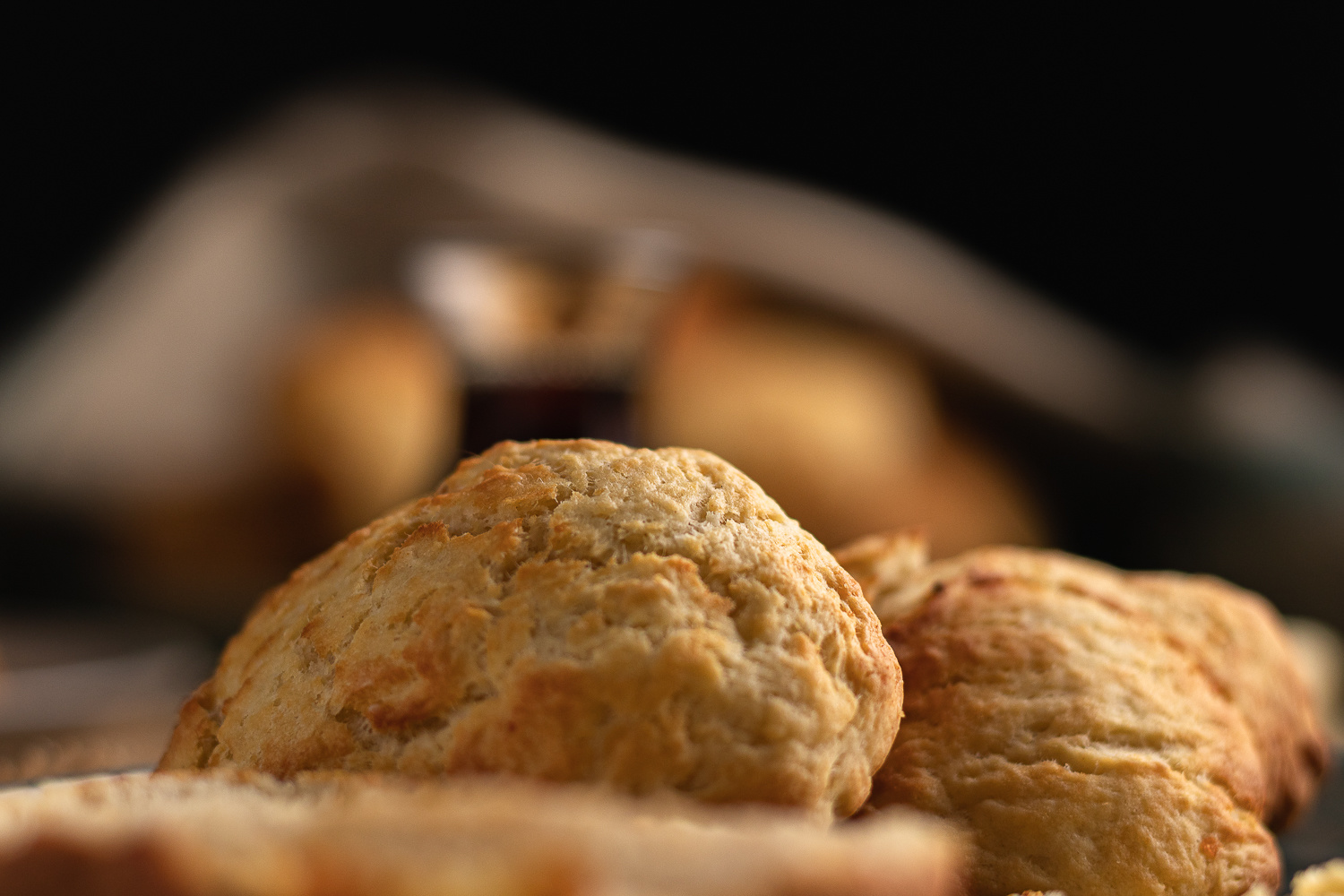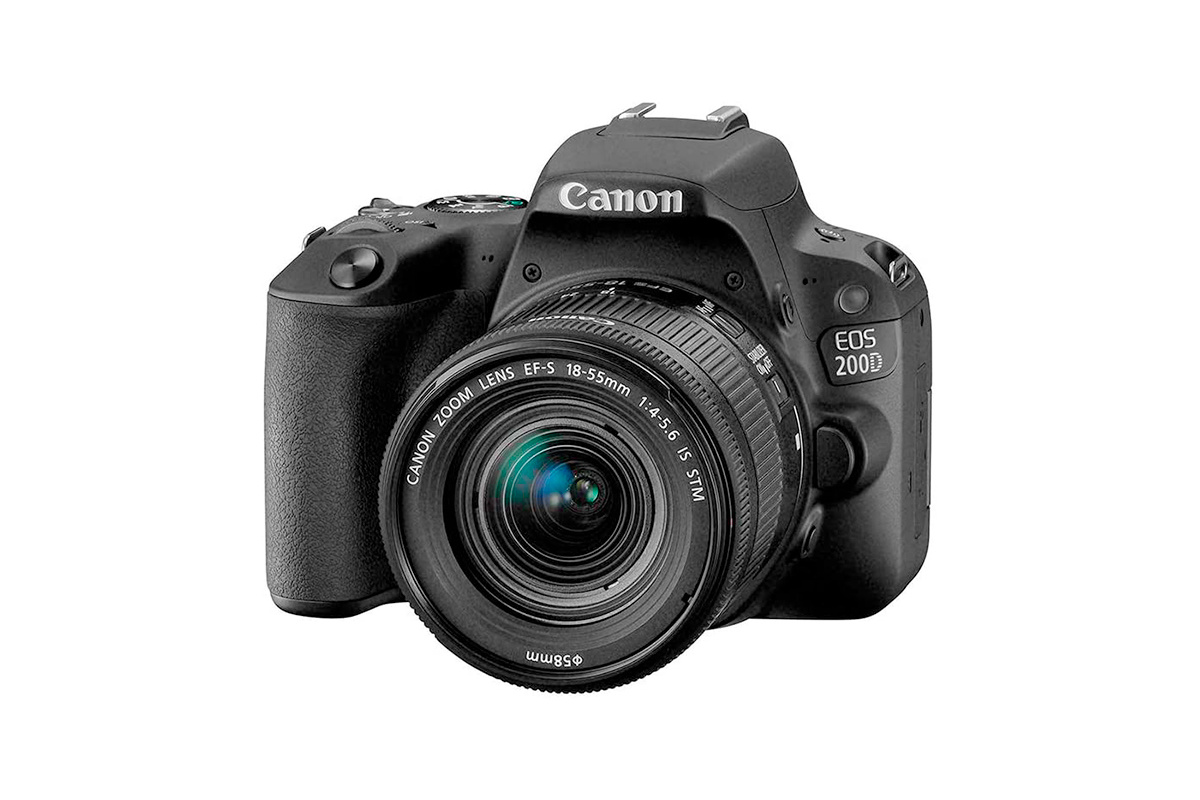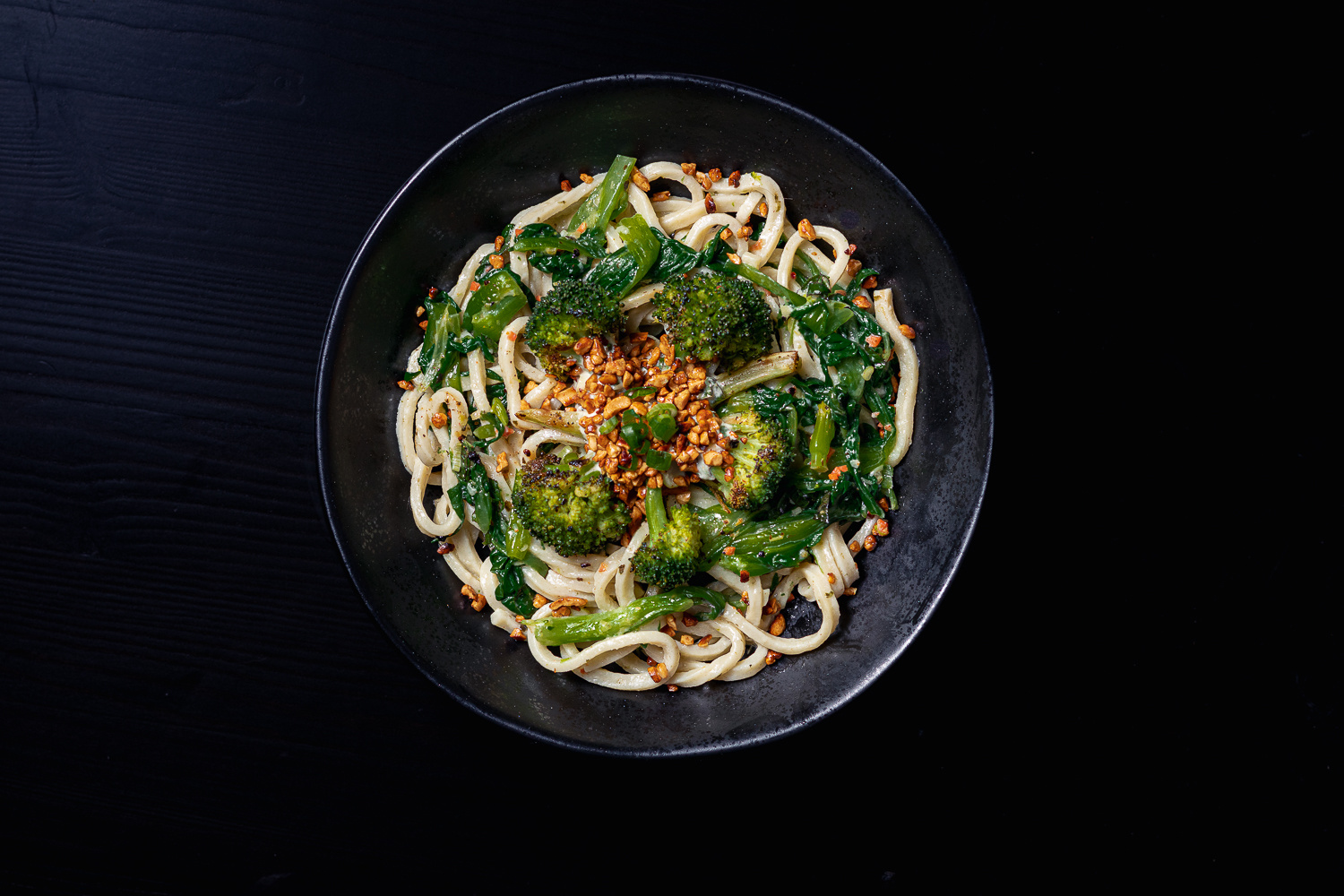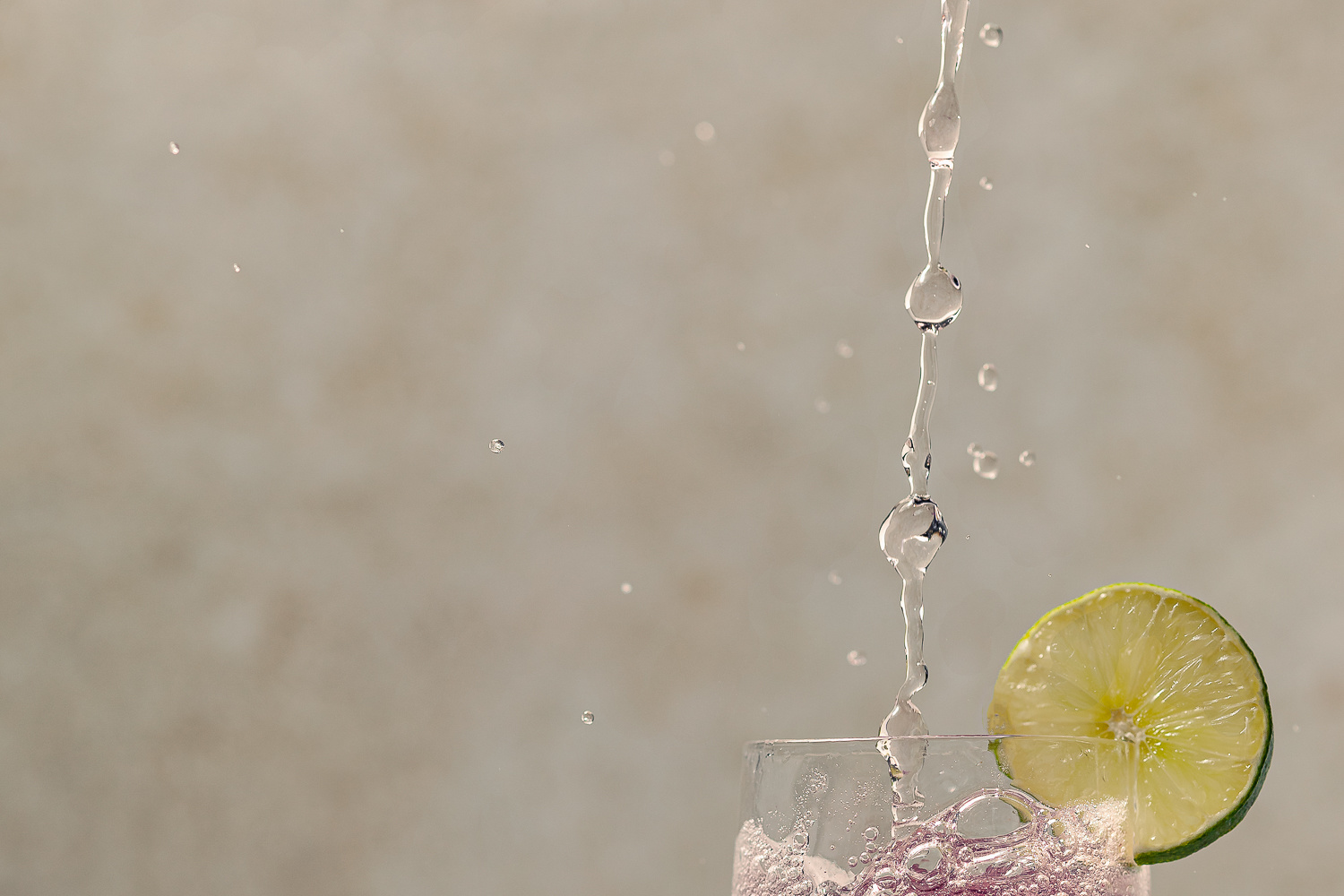When I first got interested in food photography, I was really overwhelmed by what I needed to get. And then, I heard Andrew Scrivani say: “The best gear to get you started is the camera in your pocket and the light from the window.” That was true, to an extent.
I got started in photography way back in the early 1990s, long before DSLR, in the days when we also developed our own film. So, I didn’t have to learn the science of photography when I started to solely focus on the food industry. But I did need to learn a new way to shoot. And I had to buy all the “new” equipment, again. I wasn’t exactly sure where to start, but then I heard some more wisdom from Scrivani, which boiled down to: begin shooting with the cheapest gear you can find because if you master that, you are golden.

I love this image of potato scones that I took with my starter gear. It not only captured the texture like, but it also captured the gluten fibers in the cracks of the scones with precise detail at a shutter speed of 1/200 s.
Guess what? He was right. And I still do food photography with that gear. My portfolio is a mix of both my starter gear and newer, better equipment. And no one who is going to hire me can tell the difference. This allows me to shoot with multiple cameras (both a crop sensor DSLR and full frame mirrorless) during the same shoot and in any situation with minimal equipment, and I get a consistent look to my images.
Let’s take a look at the equipment with which I started and what I recommend everyone starts with when beginning their food photography journey.
The Camera: A Used Canon Rebel SL2 (200D)

I love this camera so much. I have mobility issues that affect my hands, among other things. This camera is the perfect size and weight. I mostly shoot freehand. When paired with my 50mm lens, it weighs less than my mirrorless with any of its lenses. It also has a smaller body than my mirrorless, which is also a Canon. The pixels are also perfect for both web images and most print materials needed by my clients. I have printed two-by-three-foot canvas prints of food images taken with this camera, and they turned out great. I bought it used, with kit lens, for just under $500 at today’s exchange rate.
The Canon Rebel SL2 is discontinued, though you can still find it at some retailers. That said, I recommend the Canon Rebel SL3 with an 18-55mm lens kit. If you can’t afford it new, buy used from a reputable seller. Trust me when I say this camera will serve you for years to come.
The Lens: A Canon EF 50mm f/1.8 STM

Otherwise known as the nifty fifty, many food photographers built their careers using this lens. This is the equivalent of an 80mm lens on a full frame Canon camera. For my personal style, this is the spot in which I live. The main lens I use on my mirrorless is the Canon RF 85mm f/2 Macro IS STM, which is one reason why I can use both cameras on the same shoot, and it works in keeping things consistent. It’s not so much that I started with a crop sensor and the Canon EF 50mm f/1.8. Rather, that equipment naturally fits my style and creative vision.

These days, I mainly use my Canon Rebel SL2 and EF 50mm f/1.8 lens for overhead shots. It lives on a C stand.
If you ever upgrade to a full frame mirrorless Canon camera, you can still use this lens with an adapter. I bought this lens for $118. It’s a really affordable lens that takes good photos. There is a reason that food photographers go on about it.
The Light Source: A Godox TT600 Flash Speedlight With TTL Trigger

What I’m about to say is probably going to ruffle some feathers, but you really don’t need that Profoto or other super-expensive flash for freezing action when doing pour or splash shots. Never mind regular still photos of food. The Godox TT600 Speedlight With TTL Trigger was my first artificial light and continues to be my go-to when doing pour/splash shots or when I need a super portable lightweight light source when I’m shooting on a farm or at a vineyard.

This image was taken using my mirrorless and Canon RF 85mm f/2 macro lens with the Godox TT600 speedlight as the light source, at 1/200 s. It freezes both the action and the droplets flying out of the glass as the liquid hits the ice.
The recycling time is slower than the higher-end speedlights. But when you are just learning and building your portfolio, it’s a great starter. And, like me, you may even find yourself continuing to use it because you don’t need rapid bursts to do pour shots. I bought it for $132.
The Modifier: Neewer 43" Diameter Photography Studio Collapsible Reflective Softbox Umbrella

Neewer gets such a bad rap for no reason. I have quite the issue with gear snobs who poo-poo products from this brand. Other professional photographers get gobsmacked when they look at my images and I tell them what gear I used to get them. I think I’m a pretty good example of why you don’t need to spend a lot to take good photos. Instead, your time and money are well spent on focusing on developing your skills under any condition. And I’m not putting you at a disadvantage either.
The Neewer 43” diameter reflective softbox umbrella is so versatile, especially when I’m shooting on location. I bought it for a whopping $26.

If you are in doubt about the combination of the above, this chicken korma shot was taken using the above four items, a cheap light stand bracket to hold the umbrella and speedlight, and a cheap Amazon Basics light stand.
When all was said and done, the kit that got me back into photography and still serves me to this day cost roughly $820. This makes the entry point into food photography rather affordable, with a high return on investment.
You don’t have to go with Canon. I just prefer Canon’s color space for food. Other food photographers prefer Nikon’s color space. And some prefer Sony. Start with what you can afford — like the camera in your pocket — until you feel confident enough and are sure you love food photography enough to make that plunge into buying your starter gear.







This gear looks perfect. Great work